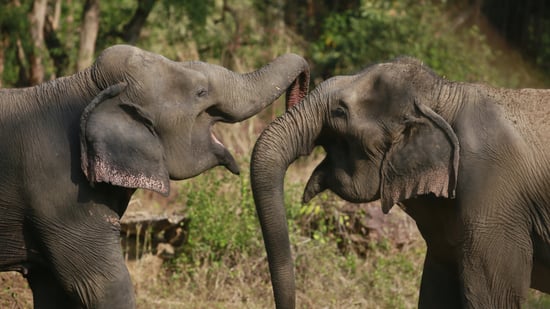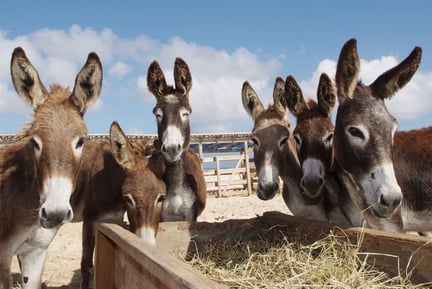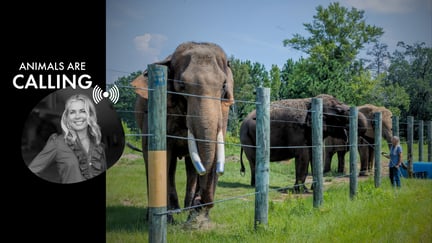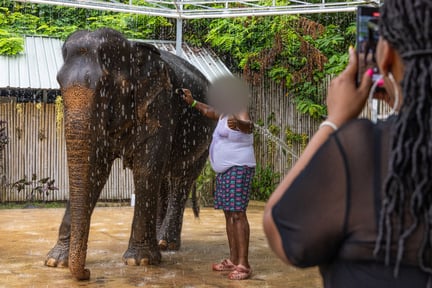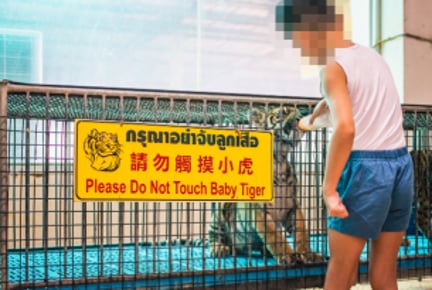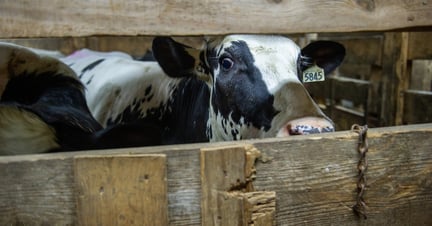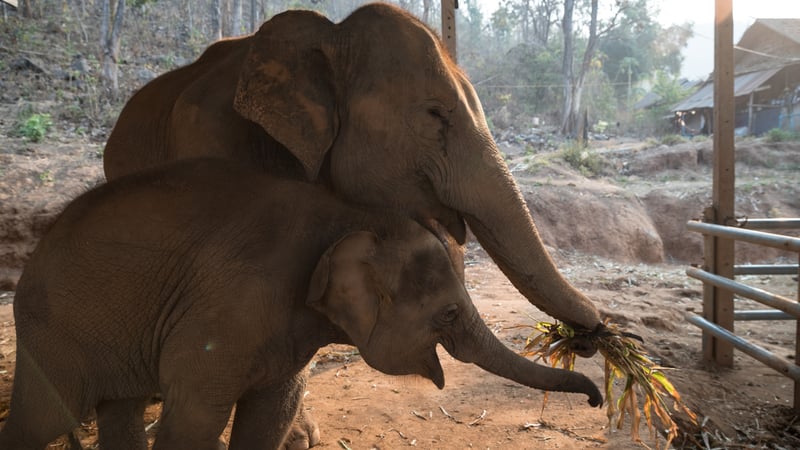
Elephants are more than just majestic creatures—they have rich emotional lives. Learn how they show empathy and feel in ways that may surprise you.
Elephants are at their most awe-inspiring in the wild and some of the behaviours they exhibit show us just how emotionally complex they are. The intelligence of elephants is something which is often overlooked by humans, however, it is clear that they are very smart creatures, but exactly how smart are elephants?
Elephants are highly empathetic
Elephants are considered to be one of the world’s most empathic species as this is displayed throughour their interactions.
In the wild, Asian and African elephant calves rely heavily on their mothers and family members for survival, social support, and learning during their first four to five years of life.
- Male elephants typically leave the group around late adolescence.
- Female elephants often remain with the group.
- Elephant calves generally stay close to the group. Observations show African elephant calves spend about 90% of their time within 5 metres of another elephant, preferring close contact.
Elephants concider eachothers feelings
Scientists have observed many cases of maternal and non-maternal elephants defending calves from dangerous situations such as chasing predators away, stopping aggressive play fights or pushing other individuals away. Such situations do not always elicit distress or pain signals in the calf, and so the protector elephants are predicting their potential distress, rather than just responding to cues.
It is suggested that elephants draw upon their past experiences and use these to consider the calf’s emotional state, they then act to prevent the situation escalating and causing the calf distress.
This behaviour is very complex, and few species are known to be able to attribute and consider another’s feelings in this way.
Donate now
When you make a donation, you’ll join a passionate group of supporters who are determined to change the world for animals. We're fighting animal cruelty wherever we find it — are you with us?
Elephants share strong social bonds
African elephants have huge complicated social groups ranging from tens to hundreds, whereas Asian elephants are often thought to be the loner elephants. Research however has shown this is not actually the case. Their social lives are so complex it has taken years of research to understand them, and we are still continuing to learn.
Elephants have friends
Female Asian elephants will have anywhere from 10-50 friends, but they may not see them for long periods of time, instead they will communicate with them both chemically (through scent) and acoustically (through sound), sending messages that travel further than we can measure. This allows them to stay aware of each other's whereabouts, even when miles apart.
Elephants pass down knowledge
Adult female Asian elephants often cross busy roads first to protect the younger ones. The younger elephants then cross, followed by the adult females who ensure everyone gets across safely. These remarkable actions showcase the depth of their social bonds and their natural instinct to protect the vulnerable.
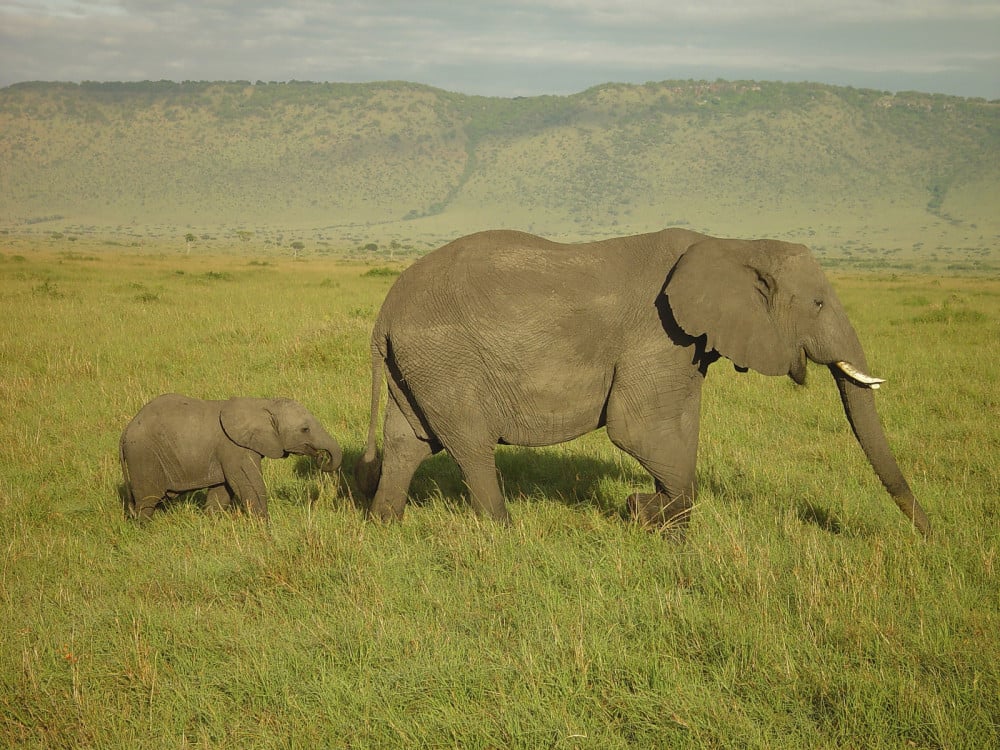
Elephants grieve
An elephants ability to feel deep empathy is hugely evident in how they grieve and mourn their dead. The experience of loss for an elephant, whether through forced separation or death, significantly impacts them.
Asian elephants, in particular, are among the few non-human species believed to express some form of grief following the death of a family member. Elephants often make repeated visits to carcasses, spend varying amounts of time with the bodies, and exhibit behaviours beyond curiousity, such as, standing with inactive trunks.
If an elephant calf loses its mother before reaching two years of age, it will likely not survive. Evidence highlights the distress this causes. For instance, a six-month-old African calf was seen nuzzling her mother's carcass, wandering around confused, and returning to the carcass. Tragically, the calf was presumed dead within three months.
Elephants recognise themselves in the mirror
It is not surprising to hear that as well as being incredibly emotional and social, elephants are considered to be one of the world’s most intelligent species.
Asian elephants have been found to pass the mirror test (Plotnik et al., 2006.) In this test, marks are placed on the animal to see whether they use the mirror to inspect themselves. When they successfully inspect themselves, this is considered to be evidence of self-awareness.
Elephants self-recognition abilities were parallel to those of apes and dolphins. For context: human children are not capeable of this until at least 18-24 months old.
Elephants make the most of their environment
In the wild, Asian and African elephants spend much of their time feeding and walking, but activities like playing, washing, mudding, and dusting are also important.
These behaviours serve practical purposes, such as hygiene and temperature control, but they may also provide emotional benefits. Elephants likely experience pleasure when eating favoured foods and find sensory enjoyment in bathing and mudding, which offer relief from the heat.
Elephants are innovative with their tools
Both Asian and African elephants have been known to use different objects as tools for conducting various tasks. For example, they've been seen using branches to swat flies, or to use dead vegetation to bury the dead.
The way that elephants are able to practically make the most of their environment and use imagination to complete different tasks shows how complex and thoughtful these animals really are.
There are many great stories to illustrate elephants use of tools. Rangers once saw African elephants break off nearby branches and dump them on to a new road, rendering it closed, repeating this four times when the branches were removed. Poignantly the road was built for the elephant cull.
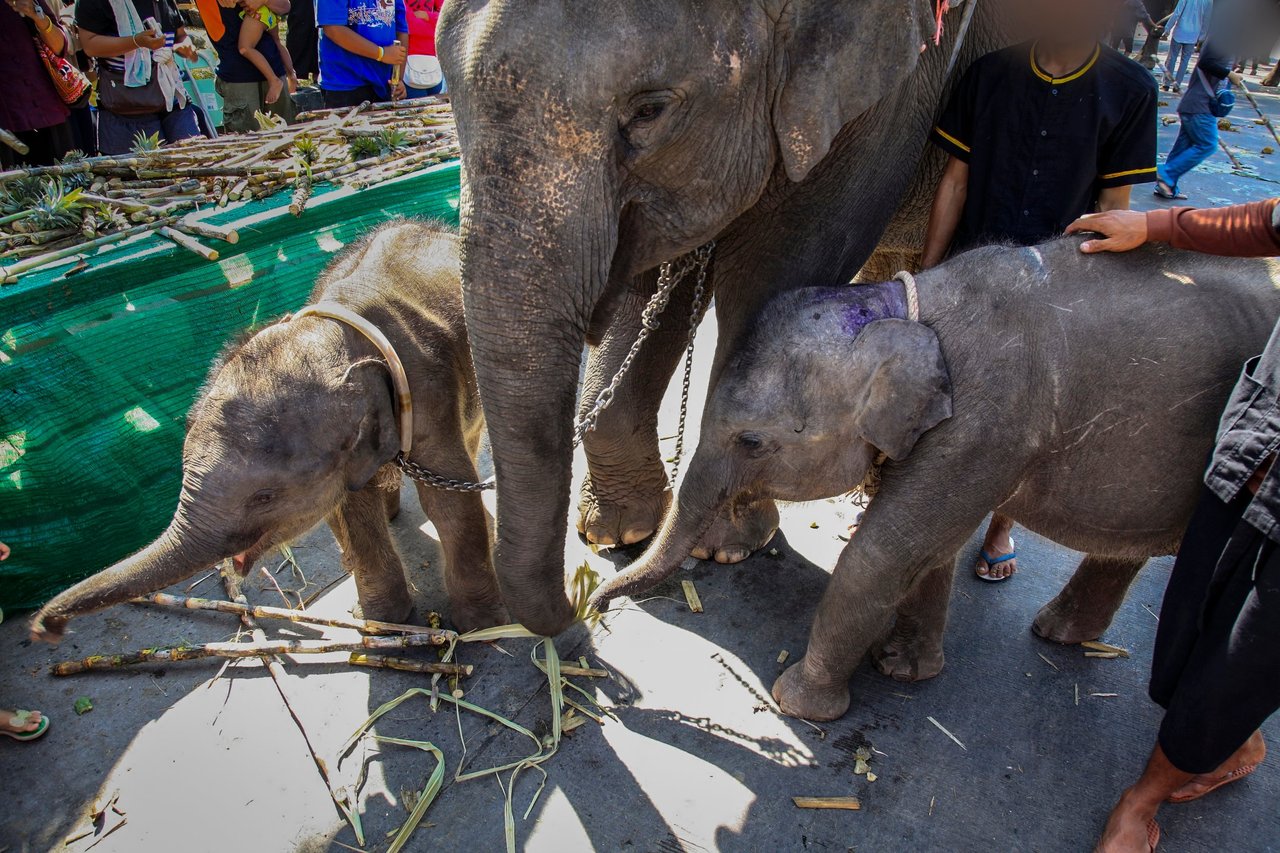
Elephants have incredible memories
Living up to the saying, "an elephant never forgets," Asian elephants can remember which stimulus results in a reward even after eight years. African elephants also have long-term memories, particularly for the individual-specific calls they use to communicate, even recognising the calls of family members who left the herd 12 years ago.
Elephants have nightmares after trauma
Given that elephants are highly intelligent and emotional animals, it's no surprise that they remember traumatic experiences and even have nightmares.
For instance, in an African elephant orphanage, young calves who have experienced trauma, such as witnessing their families being killed and their tusks removed by poachers, often wake up screaming and trumpeting in distress during the night.
How you can protect elephants
There is still so much to learn about these fascinating animals, and scientists have only really scratched the surface when it comes to understanding how intelligent and expressive elephants are.
We do know, that exploitation and cruelty towards elephants has a deep emotional impact on these sensitive creatures. Therefore, it is crucial to protect elephants from exploitation in tourism, ensuring their well-being and allowing them to live free from the trauma and stress that such activities can inflict.
By doing so, we honour their intelligence and emotional complexity, and we take a stand against practices that cause them profound suffering.
Read more
-
Ending the Annual Whale Hunt in the Faroe Islands
Learn about Grindadrap, the annual Faroe Islands whale hunt. Discover which whales are targeted, why hunting persists, and...
-
9 Interesting Donkey Facts You Should Know
Learn these facts about donkeys that will make you know and defend them more.
-
Keep Wildlife In The Wild
In this Q&A, we discuss the suffering of sentient wild animals when they are kept in captivity for...
-
Koala Hugging Ban: Step Forward in Ethical Tourism
Following the decision to end koala hugging at an Australian tourist attraction, our Global CEO, Tricia Croasdell, explores...
